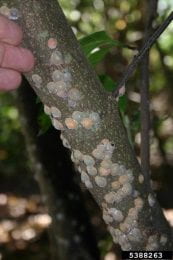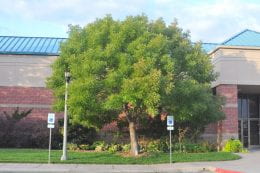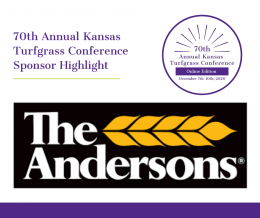By Brooke Garcia
In conjunction with the 70th Annual Kansas Turfgrass Conference, the K-State Turf and Landscape Blog will be highlighting our top-tier, Albatross sponsors over the next weeks. Our Albatross sponsors generously contributed $750 or more in support of our conference this year. This additional funding helps to support K-State Turfgrass research and education.

This sponsor spotlight is for Vulpes Agricultural Corp. Vulpes Corp. is a holding company based out of the greater St. Louis area, and they are the first to being functionalized nanocarbon to the mass agriculture market.
Vulpes Agricultural Corp. is driven by two business goals:
1. Using decades of pharmaceutical experience to speed up new agrichemical development
2. Using new agrichemicals to massively improve water, nutrient, and fungicide use efficiency for a more sustainable future
Vulpes is currently working with 11 teams from 8 American universities and research institutions to carry out extended research, validation, and trial of its nanocarbon products. Currently, crops that are going through independent labs, chambers, greenhouses, and field trials include: Arabidopsis, Beets, Corn, Grape, Hop, Lettuce, Ornamentals, Pepper, Rapeseed, Sorghum, Strawberry, Sunflowers, Tomato, Turf Grass, and Wheat.
They are being tested and trialed for:
- Yield increase,
- Growth cycle changes
- Fertilizer saving
- Abiotic stress resistance
Carbon Black Acid, specifically, has the following modes of action in a plant:
- Effective carrier to absorb water and nutrients from the soil and then deliver them directly through seed coats and into plant cells
-
Plant growth regulator to stimulate root & shoot growth
To learn more about the Nanocarbon project, visit: Nanocarbon Project – Vulpes Agricultural
Additional Questions?
Rick Shang, Chief Executive and Founder of Vulpes Corp.
Website: https://www.vulpesagricultural.com
Phone: (314) 833-8683 / Email: rick@vulpescorp.com









